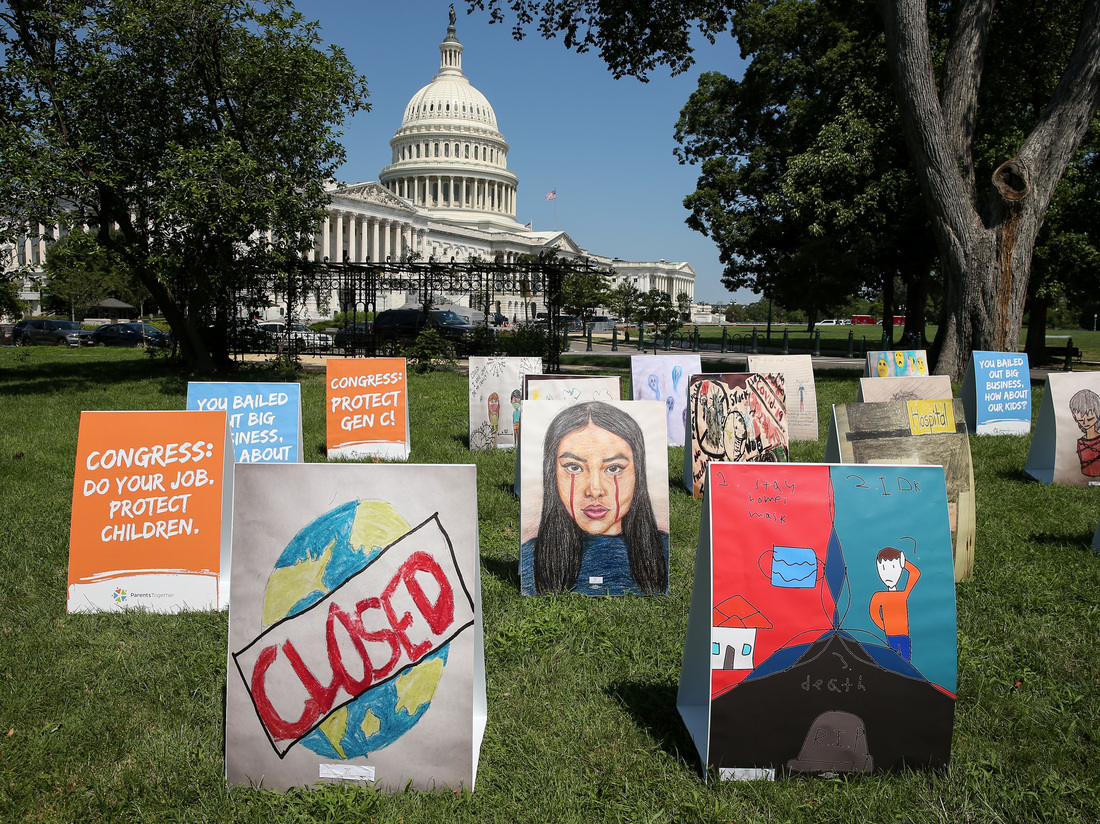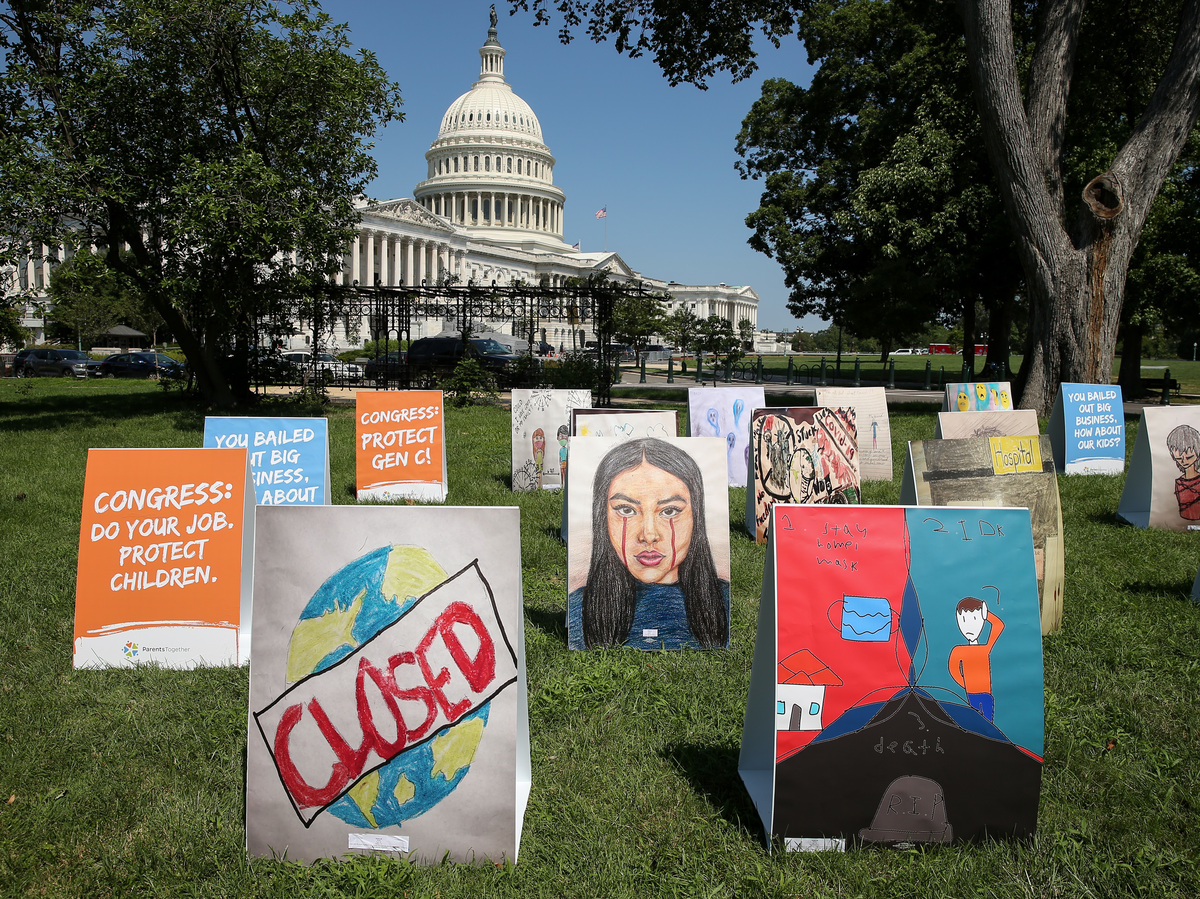
[ad_1]

Children’s art dots the lawn outside the Capitol in an installation Wednesday. Kids can develop “severe” symptoms from the coronavirus, the Centers for Disease Control and Prevention found in a report released Friday.
Jemal Countess/Getty Images for ParentsTogether
hide caption
toggle caption
Jemal Countess/Getty Images for ParentsTogether

Children’s art dots the lawn outside the Capitol in an installation Wednesday. Kids can develop “severe” symptoms from the coronavirus, the Centers for Disease Control and Prevention found in a report released Friday.
Jemal Countess/Getty Images for ParentsTogether
While most children who catch the coronavirus have either no symptoms or mild ones, they are still at risk of developing “severe” symptoms requiring admission to an intensive care unit, the Centers for Disease Control and Prevention found in a new report released Friday.
Hispanic and Black children in particular were much more likely to require hospitalization for COVID-19, with Hispanic children about eight times as likely as white children to be hospitalized, while Black children were five times as likely.
Despite persistent rumors that children are “almost immune” from the virus, the analysis of 576 children hospitalized for the virus across 14 states found that one out of three was admitted to the ICU — similar to the rate among adults. Almost one in five of those were infants less than three months old. The most common symptoms included fever and chills, inability to eat, nausea and vomiting.
The findings come as school districts across the country are figuring out how to educate the nation’s children while still protecting kids, teachers and family members from the ravages of the virus. The American Federation of Teachers has said it only considers in-person schooling to be safe if fewer than 5% of coronavirus tests in an area are positive.
Researchers don’t fully understand why some racial groups are hospitalized at higher rates than others. But the CDC’s findings are consistent with other studies, the authors of the report said, citing a recent analysis from the Baltimore-District of Columbia region that found Hispanics saw more COVID-19 infections than other groups.
“It has been hypothesized that Hispanic adults might be at increased risk for SARS-CoV-2 infection because they are overrepresented in frontline (e.g., essential and direct-service) occupations with decreased opportunities for social distancing, which might also affect children living in those households,” the CDC researchers wrote.
Underlying medical conditions might have contributed to the children’s hospitalization, researchers wrote, noting that Hispanic and Black children were more likely to suffer from conditions like obesity.
If there’s any good news, it’s that even among children hospitalized with severe COVID-19 complications, the fatality rate remains low, researchers said.
A separate study in the journal Pediatrics also found racial and socioeconomic disparities in children and young adults tested for COVID-19 in D.C. Hispanic children were more than six times as likely as white children to test positive for the virus; black children were over four times as likely.
Ultimately, the CDC concluded, it’s crucial to continue prevention efforts wherever children gather in group settings, specifically citing schools and childcare centers.
[ad_2]
Source link